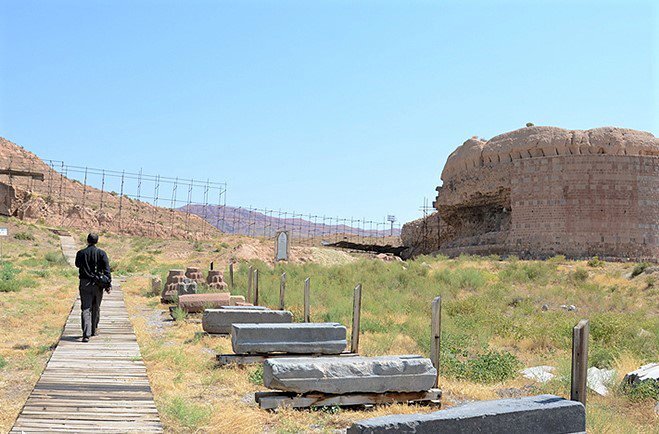New tourism route to take visitors to 14th-century educational complex

TEHRAN – A new tourism route is planned to be created surrounding the ruins of Rab’-e Rashidi, a 14th-century educational complex in East Azarbaijan, northwest Iran, the provincial tourism chief has said.
The route is designed to allow tourists to access different parts of the historical site, Ahmad Hamzehzadeh explained on Sunday.
The project is expected to be completed within three months, the official added.
Rab’-e Rashidi was established during the reign of Ghazan, a ruler of the Ilkhanid dynasty. It embraces a paper factory, a library, a hospital (Dar-al-Shafa), a Quranic center (Dar-al-Quran), residential facilities for teachers, students’ quarters, and a caravanserai amongst other facilities.
Situated in the northwestern city of Tabriz, the capital of East Azarbaijan, the complex includes several archaeological layers that date from Ilkhanid, Safavid, and Qajar eras, Ajorlou added.
Soaked in history and culture for millennia, Tabriz embraces several historical and religious sites, including the Jameh Mosque of Tabriz and Arg of Tabriz, and UNESCO-registered Tabriz Historic Bazaar Complex to name a few. The city became the capital of the Mongol Il-Khan Mahmud Gazan (1295–1304) and his successor. Timur (Tamerlane), a Turkic conqueror, took it in 1392. Some decades later the Kara Koyunlu Turkmen made it their capital, it was when the famous Blue Mosque was built in Tabriz.
The city retained its administrative status under the Safavid dynasty until 1548 when Shah Tahmasp I relocated his capital westward to Qazvin. During the next two centuries, Tabriz changed hands several times between Persia and Ottoman Empire. During World War I, the city was temporarily occupied by Turkish and then Soviet troops.
ABU/AFM

Leave a Comment